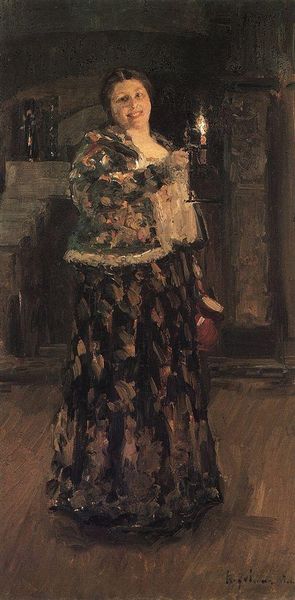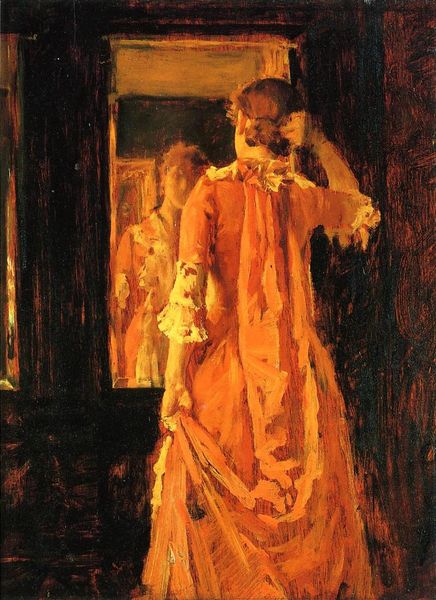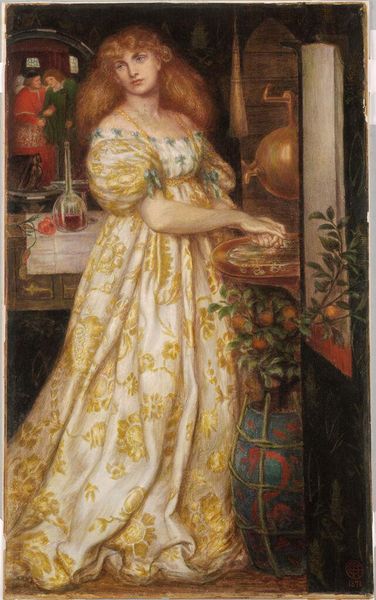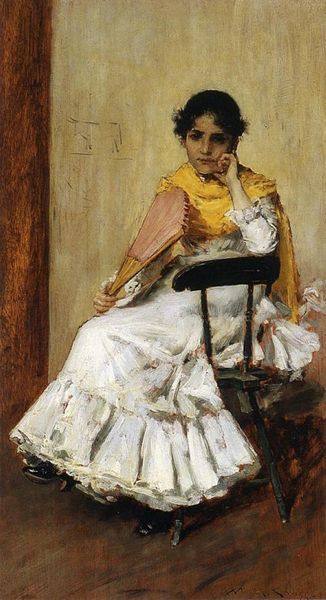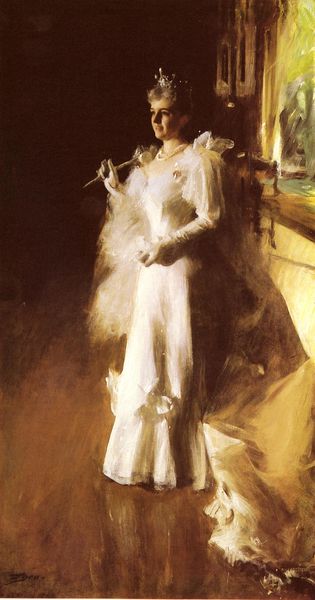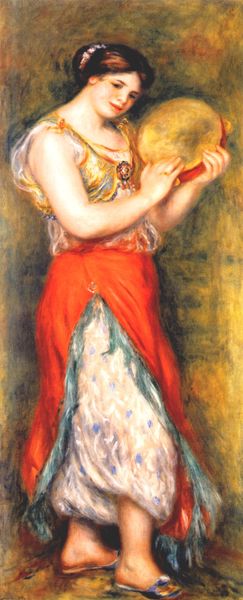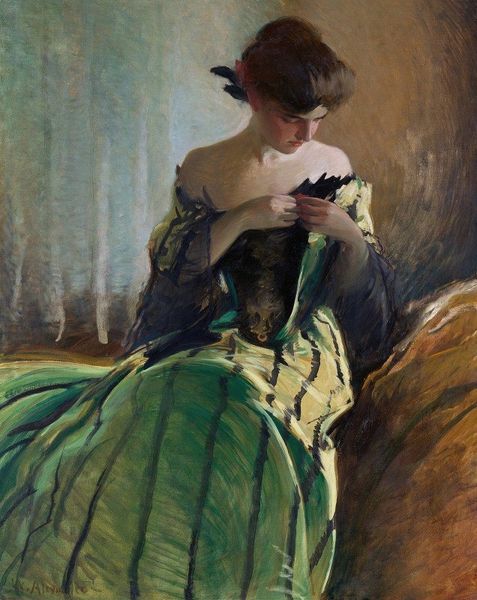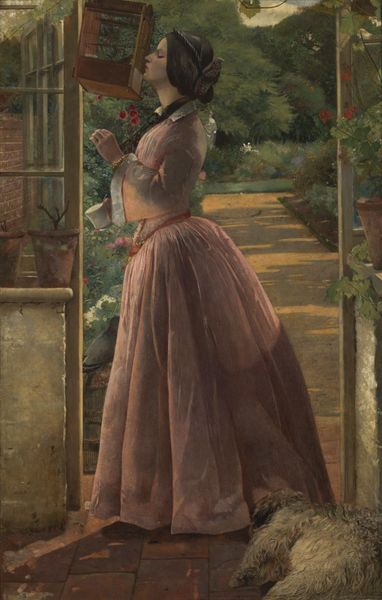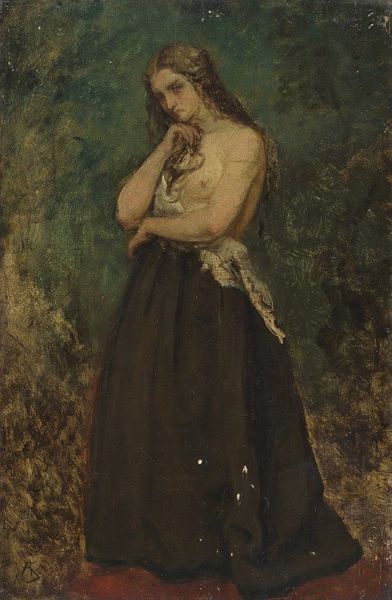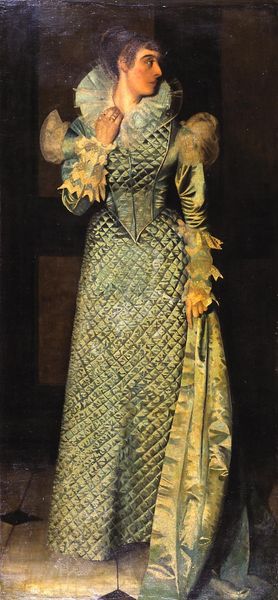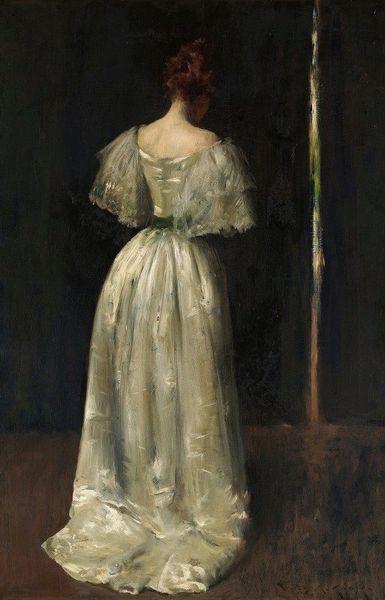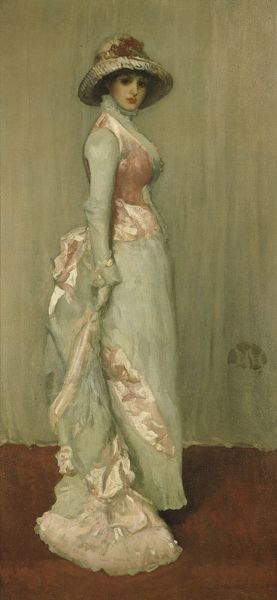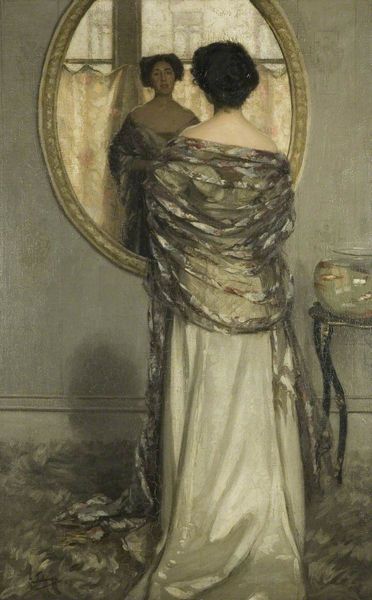
Copyright: Public domain
Editor: This is Joseph DeCamp's "Girl with a Green Shawl," painted around 1900. The woman’s reflection catches my eye—there's something melancholy about her gaze in the mirror. How do you interpret this work? Curator: Indeed. What strikes me first is the formal construction of the painting. Consider how DeCamp employs the mirror not simply as a reflective device, but as a structural element that bisects the composition, creating a dialogue between the seen and the unseen. The dark frame against the green and beige palette lends itself to introspection on form and space. Note the loose brushwork, especially in the skirt; its lack of defined lines pushes the painting toward abstraction, inviting viewers to fill in the details, no? Editor: That’s a keen observation. I hadn't considered how the blurring adds to the overall mood, making her seem like a figure in a dream rather than a precise representation. Are there specific ways his technique enhances this feeling? Curator: Precisely! Examine how the contrast is developed across the piece and the overall textural relationships. Also, I find myself wondering if the bright green is a symbol to any potential emotion she feels. We must look beyond a pure imitation of nature. What do you notice about the relationship between the woman, her clothing, and the pictorial space? Editor: I now appreciate how DeCamp's focus on form contributes to the work’s evocative power and subtle meanings. The mirroring creates dimension and encourages viewers to delve deep. Curator: Exactly. And I find myself reminded how such portraits challenge us to look past narrative, encouraging pure appreciation of artistic strategies.
Comments
No comments
Be the first to comment and join the conversation on the ultimate creative platform.
